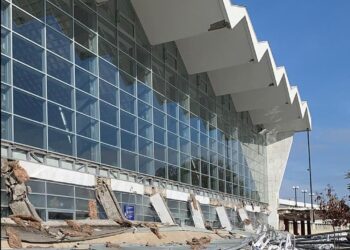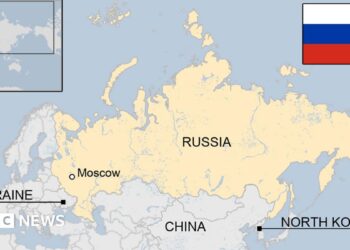Serbia is currently engulfed in widespread protests as citizens across the country rally to demand snap elections. The demonstrations, sparked by growing dissatisfaction with the government’s performance and calls for political change, have drawn thousands into the streets of major cities. This surge of public unrest underscores mounting tensions within Serbia’s political landscape, as opposition groups and civil society mobilize to challenge the status quo.
Protests Sweep Serbia Amid Rising Calls for Immediate Elections
Thousands of Serbians have taken to the streets nationwide as unrest escalates over concerns about the current government’s handling of economic stagnation and political transparency. Protesters are united in their demand for early elections, expressing frustration with what they describe as a lack of accountability and growing authoritarian tendencies. Major cities including Belgrade, Novi Sad, and Niš have seen days of sustained demonstrations, with participants calling for an overhaul of the political landscape and the introduction of reforms to safeguard democratic institutions.
The protests have been characterized by peaceful marches, impassioned speeches, and symbolic acts such as candlelight vigils in front of government buildings. Opposition leaders have rallied the crowds, urging them to maintain non-violent discipline while amplifying their call for change. Security forces have remained present but largely restrained, with reports indicating minimal clashes. Below is a summary of key protest locations and their estimated turnout:
| City | Estimated Protesters | Duration |
|---|---|---|
| Belgrade | 15,000+ | 3 days |
| Novi Sad | 5,000 | 2 days |
| Niš | 3,000 | 2 days |
| Subotica | 1,200 | 1 day |
- Demands focus on immediate scheduling of national elections.
- Calls for greater transparency and anti-corruption measures.
- Emphasis on protecting independent media and judicial reforms.
Analyzing the Political Implications of Serbia’s Mass Demonstrations
Serbia’s latest wave of mass demonstrations marks a critical juncture in the country’s political landscape. Citizens, fueled by widespread dissatisfaction with the ruling administration’s policies and governance style, are intensifying calls for snap elections as a demand for greater transparency and accountability. These protests not only underscore deep-rooted frustrations over economic stagnation and perceived corruption but also signify a larger struggle for democratic renewal in a region historically marked by political volatility.
The implications of sustained civil unrest extend beyond domestic boundaries, influencing Serbia’s relations with the European Union and neighboring Balkan states. Key factors shaping the unfolding scenario include:
- Political legitimacy: The ruling party faces unprecedented challenges to its mandate amid eroding public trust.
- Policy recalibration: Authorities might be compelled to adjust their strategic priorities to appease growing social demands.
- International scrutiny: EU accession talks could be impacted by perceived instability and democratic backsliding.
| Date | Protest Size Estimate | Government Response |
|---|---|---|
| April 10, 2024 | 20,000+ | Negotiation Offers |
| April 17, 2024 | 35,000+ | Increased Security Presence |
| April 24, 2024 | 50,000+ | Declaration of Talks Suspended |
Strategies for Dialogue and Democratic Reform in Serbia’s Escalating Crisis
Amid the mounting unrest in Serbia, fostering constructive dialogue has become pivotal to defusing tensions and steering the nation toward democratic renewal. Key stakeholders-including government officials, opposition leaders, and civil society groups-must prioritize transparent communication channels that rebuild trust and encourage collaborative problem-solving. Essential elements of this approach include:
- Inclusive negotiation forums that represent diverse political and social perspectives.
- Independent mediation bodies to facilitate impartial dialogue and ensure accountability.
- Public engagement initiatives to maintain citizens’ voices at the forefront of reform processes.
- Commitment to constitutional safeguards preventing abuses of power and protecting minority rights.
Implementing these strategies alongside urgent democratic reforms can stabilize the crisis and lay groundwork for fair snap elections. A transparent electoral roadmap coordinated with international observers could reinforce electoral integrity and public confidence. The following table summarizes the proposed priorities for democratic reform, emphasizing actionable measures and timelines:
| Reform Area | Action | Timeline |
|---|---|---|
| Electoral Law | Revise campaign financing rules | 3 months |
| Media Freedom | Guarantee independent press oversight | 6 months |
| Judicial Independence | Strengthen anti-corruption frameworks | 12 months |
| Political Pluralism | Enhance minority party participation | Ongoing |
In Summary
As protests continue to sweep across Serbia, the demand for snap elections remains a focal point of public discontent. The unfolding situation underscores the growing political tensions within the country, with both government authorities and opposition groups closely monitoring the developments. How the Serbian leadership responds in the coming weeks will be crucial in determining the nation’s political trajectory moving forward.














